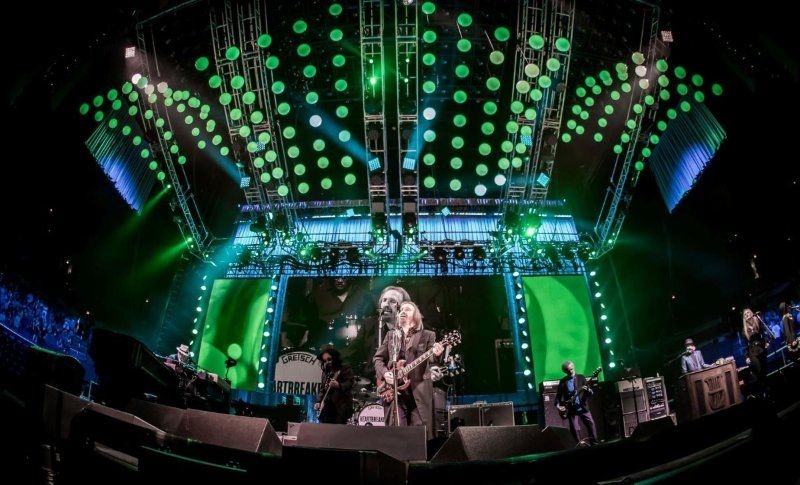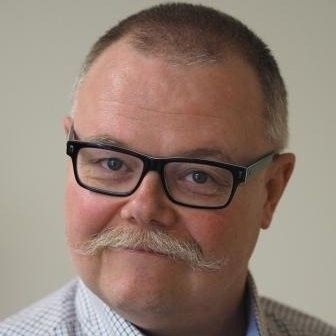The Show Must Go On!

VER provided the stage truss, lights, LED, projectors, screens, cables and audio systems for the final Tom Petty and the Heartbreakers Tour.
VER Logistics
VER – an A/V equipment rental company – needed to rationalize its logistics network. VER stocked the latest and most popular equipment in the market, which created high demand. VER rented television and digital film cameras, lenses, and recording, mixing, lighting and audio systems out of 33 offices in the US and Canada. The company also rented digital projectors, screens, stage lighting, stage truss, and the LED panel systems to make massive video walls.
The cash flow foundation of the business centered on hotel and convention A/V equipment. Every large business conference and trade show use projectors, computers, screens, audio, and video systems to support the show. VER offices in the major convention cities served the hotel and convention business in a competitive market, creating a constant order flow for the hardware needed to stage corporate events. Constant order flow = constant cash flow.
In addition to the foundation convention business, VER built specialist divisions, like Broadcast, Cinema, and Show divisions. VER grew staging lighting, audit and truss capacity at offices in entertainment cities like Los Angeles, Las Vegas, and Nashville. In the New York and LA/Glendale offices, the company grew the demand for broadcast quality systems to support television productions. VER opened Digital Cinema offices in Atlanta, Chicago, Ft. Lauderdale, and New Orleans, providing equipment set up and configuration services.
The equipment, or gear, required to put on a corporate event for 2,500 people is massive, sometimes two full semi-truckloads. VER rented everything from power cords to television production systems. To best serve customers’ needs anywhere in the world, VER moved gear to wherever the customer needed it. The gear was mobile, so no single office owned the equipment. Any piece of equipment anywhere in the system was available to rent from any VER office. VER’s dedication to customer service created a planning and logistics challenge for its equipment booking and operations teams.
The booking team’s first hurdle was finding the gear. VER bought lots of simple stuff like power cords, light stands, screens, and typical gear for the hotel business. The more expensive a single piece of gear, the fewer the company bought. The more special or expensive the gear, and the more demand for the gear, the harder it was to book the gear. Special gear, like LED and lighting, serviced out of one or two offices, created a processing restraint for QC and repair between rentals.
Coordinators hunted the system using two searches to reserve the gear to the sales order. First, searching in stock at the office shipping the order, and second, looking in the gear out on rental from the office, the coordinators filled the orders.
Remaining open items on an order required transferring gear. The more special the gear, or the higher the demand for the gear, the more the gear transferred. Equipment constantly transferred between VER’s branches, often on tight schedules. VER became Southwest Air’s top air cargo customer, flying gear daily, a driving reason for locating company offices close to airports. More equipment transferred via truck, mainly between major market locations, like Los Angeles, Las Vegas, Chicago, Atlanta, Nashville, and New York.
Identical pieces of gear passed each other by the truckload each night in office-to-office transfers. Some pieces of gear racked up more time in transfer transit than in rental time. The costs and the lost revenue cut at the cash flow.
We worked with managers to address the gear availability issues. VER could not turn to IT-based solutions, as that department reorganized and rebuilt the technology stack while current systems struggled to maintain transaction processing. Still needing data, we worked with coordinators and managers to extract and refine data from the live system. We created a transfer profile for all transferred gear. We identified the 15% of model numbers of gear that created about 60% of all transfers. The transfer data extracted from the four days of order history highlighted critical planning and operations opportunities. And, we discovered that VER had moved four million pieces of equipment in less than a year.
Managers had talked about shifting the network to a hub and spoke design from the start of our engagement. Working with our project sponsor, we provided data supporting general A/V hubs in Las Vegas, Chicago, Nashville, Dallas, and New Jersey. We developed an initial pro-forma expense analysis, indicating a strong positive cash flow change.
No single action could solve the transfer cost problem. VER addressed three different issues: gear inventory, hub locations, and personnel.
Gear Inventory
Adding inventory for the gear in demand immediately relieved pressure. VER invested in more units of the top 15% of model numbers, moving the expense of transport into an investment in gear.
Hub Locations
Hub facilities needed additional storage and engineering space. We led the development of the prototype hub facility with the construction of the new Las Vegas office. We worked with VER managers to locate potential hub offices and evaluate current facilities to operate as hub offices. We supported the technical design and development of new hub offices in Chicago.
Personnel
Working with the Las Vegas team, we developed new processes for hub operations. We trained managers to become trainers and coaches for floor leaders. We coached managers, supervisors and floor personnel on better methods and improved habits. Our focus on the managers around us created a cadre of 11 business leaders for the company.
Engagement:
Part of a 2+ year engagement - about 10% of total work.
Deliverables:
Analysis, maps, graphic reporting of data & recommendations.
Investment:
Under $25,000 for this part of the overall project.
ROI:
Over $1 million in freight cost reductions
Has your business model grown past the capabilities of your current logistics network? Are transportation costs multiplying faster than your growth multiple? Perhaps it is time to consider a hard look at how the network works and doesn't work. Give us a call and let's talk about how we can work together to identify the root causes of the complicated costs.
 Hello! My name is Dave Schneider, I'm the founder and publisher of We Are The Practitioners.
Hello! My name is Dave Schneider, I'm the founder and publisher of We Are The Practitioners.
It is a complex world. We help simplify it. I'd love to help you simplify your business supply chain challenges.
Give me a call anytime at 877-674-7495
David K Schneider & Company - We Are The Practitioners.com - The Hornbaker Works
9026 Hornbaker Road, Manassas, VA 20109 - PO Box 230457, Centreville, VA 20120
info@ DKSCO1.COM - (877) 674-7495


